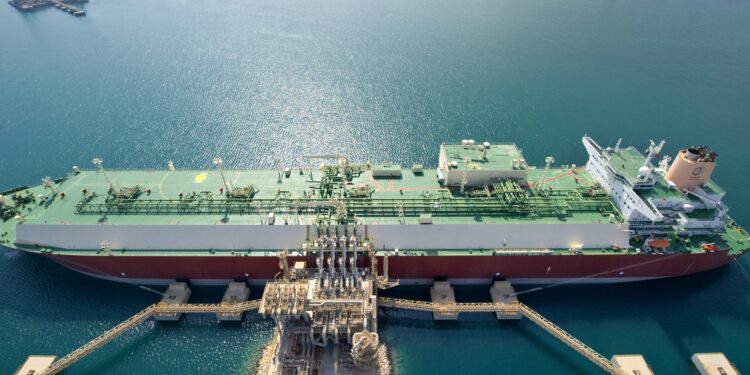Standard Chartered Bank expects Qatar to achieve a significant acceleration in economic growth starting in 2025, driven by significant expansions in its liquefied natural gas production capabilities.
The bank’s report, “Global Focus Economic Outlook for the Second Quarter of 2024,” confirms that the increase in liquefied natural gas production would significantly raise Qatar’s position on the global economic arena.
The CEO of Standard Chartered Qatar, Muhannad Mukhal, highlighted the promising economic forecasts by saying: “The State of Qatar is on the verge of achieving a major economic leap.”
He explained, “Thanks to the expanded liquefied natural gas project in the North West Field, this project will not only add 16 million tons of liquefied natural gas annually, but will also enhance Doha’s position as a leading country in the field of liquefied natural gas.”
Turn slowdown into boom
The economic report charts a turning point for the Qatari economy, as it states that the economy is currently going through what it describes as the “pre-big gas boom” stage.
This period, following the slowdown following the 2022 FIFA World Cup, is expected to shift dramatically with the start of new LNG projects in 2025.
The plans are scheduled to increase liquefied natural gas production from the current 77 million tons annually to 126 million by the end of 2027, and then to 142 million by 2030, an increase of 85% compared to previous plans that aimed for an increase of 64%.
Stimulate the private sector and reduce debt
The report also expects that the expansion will stimulate growth in the private sector. He points out that private sector credit growth reached about 6% on an annual basis last January, exceeding gross domestic product growth, which slowed to 1.0% in the second quarter of 2023 from 8.0% in the fourth quarter of 2022.
Regarding financial health, according to the report, it is expected that the planned expansion of liquefied natural gas production will significantly curb public debt. The report expects that public debt will decline to about 37.5% of GDP by the end of 2024, to 35% by the end of 2025, and 30% by 2027.
This decrease is due to Qatar’s strategic use of its abundant surpluses to repay foreign debts, with the total upcoming maturities reaching about $4.8 billion in 2024, and $2 billion in 2025.
More financial stability
The financial break-even price of oil in Qatar is still the lowest among oil-exporting countries in the region, according to the report, at only $50 per barrel.
This advantageous position is supported by the country’s strong financial reserves, which have seen an increase of $10 billion since early 2022, reaching $67.6 billion in January.
The composition of government debt has also changed, with foreign and domestic debt now maintaining roughly equal shares, compared to a 60:40 split in favor of external debt in 2020.
This amendment reflects a strategic move to achieve balance in the financial portfolio and reduce dependence on external debt, according to observers.
Regional and global forecasts
In addition to local influences, the bank’s report also takes into account broader economic trends. Mokhal added: “With the increase in LNG capacity, we expect significant multiplier effects on the regional and global economies.”
Asia remains the main driver of growth, with the Middle East and North Africa region poised for faster expansion in 2024 than in 2023.
The bank expects global GDP growth to remain stable at 3.1% this year, and to improve slightly to 3.2% in 2025.



